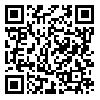Fri, Jan 24, 2025
[Archive]
Volume 11, Issue 1 (3-2021)
ASE 2021, 11(1): 3485-3493 |
Back to browse issues page
Download citation:
BibTeX | RIS | EndNote | Medlars | ProCite | Reference Manager | RefWorks
Send citation to:



BibTeX | RIS | EndNote | Medlars | ProCite | Reference Manager | RefWorks
Send citation to:
karimaei H, Chamani H. Application of Elasto-HydroDynamic (EHD) Model to Predict Erosive Wear Failure in Conrod Bearing. ASE 2021; 11 (1) :3485-3493
URL: http://www.iust.ac.ir/ijae/article-1-474-en.html
URL: http://www.iust.ac.ir/ijae/article-1-474-en.html
Aerospace Research Institute, Ministry of Science, Research and Technology
Abstract: (9551 Views)
Erosive wear damage is common damage in the bearing shell of engines which causes a change in bearing profile and affects the oil film pressure and durability of bearing shell. The objective of the present paper is to present an appropriate algorithm for prediction and failure analysis of wear in BE bearing of engines using the Elasto-HydroDynamic (EHD) model. The mentioned model incorporating a mass-conserving algorithm is utilized to compute the lubrication characteristics of bearing, such as minimum oil film thickness and maximum oil film pressure. In EHD analysis, bearing housing is modeled by the finite element method to consider the bearing deformation. To estimate the wear volume, a code was written in MATLABÒ software which modifies the bearing profile and surface roughness during the analysis. A modified Archard model is used to model the lubricated sliding wear of rough contacting surface. Change in bearing surface roughness due to wear is modeled by the Abbot curve. Finally wear damage progression of BE bearing during engine operation is calculated and the results are thoroughly discussed. The numerical simulation results confirm that the wear rate at the initial stage of engine running is significant. It is concluded that wear adapts the bearing geometry in proper condition and improves the contact problem at the edges of bearing.
Type of Study: Research |
Subject:
Modern Powertrain (hybrid, electric, CNG, bio, ...)
Send email to the article author
| Rights and permissions | |
 | This work is licensed under a Creative Commons Attribution-NonCommercial 4.0 International License. |






